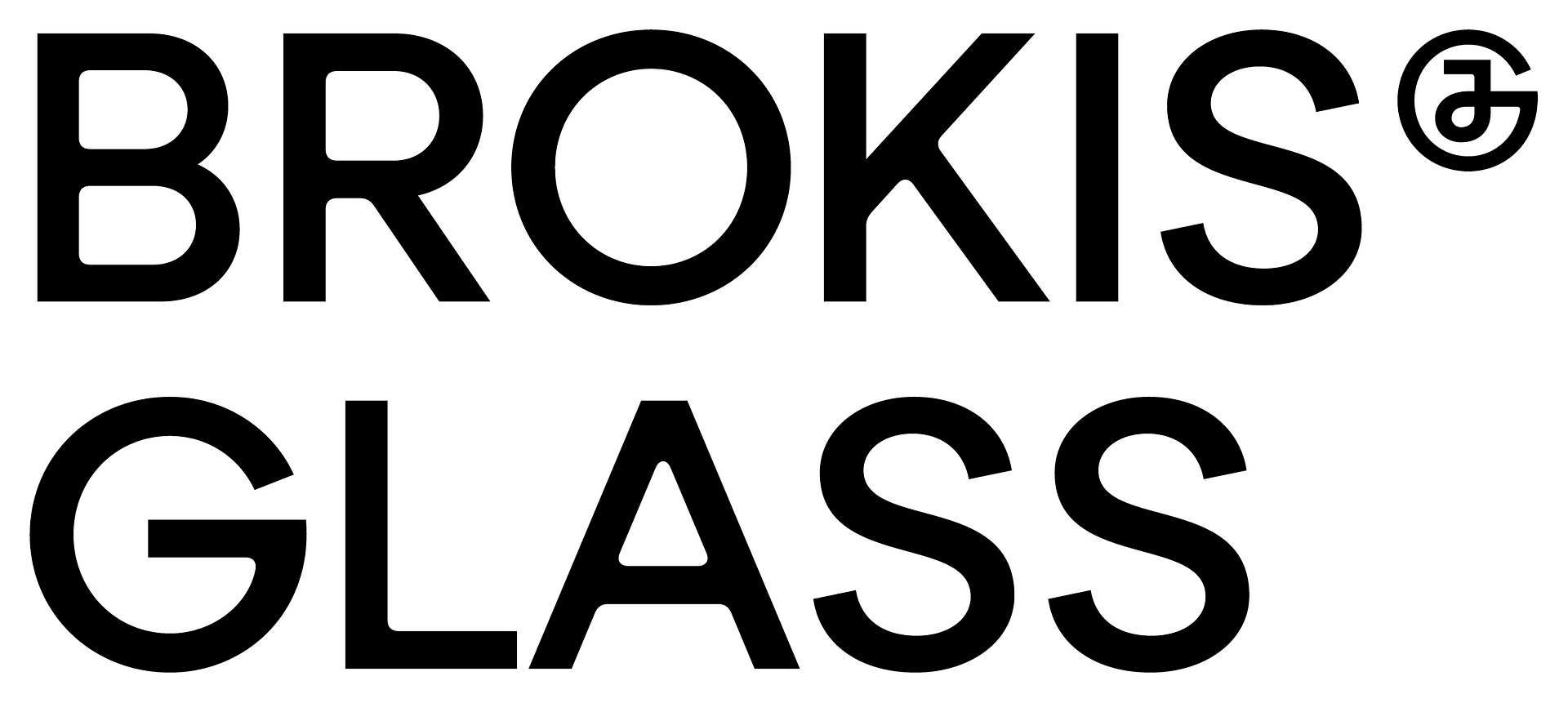
PANELS / P.
Made from shards of glass discarded during the manufacture of Brokis handblown glass lighting collections, Brokisglass has brought about a significant reduction in waste material. The transformation of these shards into a new decorative product represents an environmentally friendly and efficient upcycling of material, thanks to which the glassworks is able to employ a strategic circular economy and thus contribute to the creation of a healthy relationship between nature and humans.
Other sizes and thicknesses can be made to order. Smaller sizes and other formats and shapes are created by cutting individual panels with a waterjet.



Technical information
Nomenclature
Decorative BROKISGLASS panels are designated in the portfolio with the letter T – TILES.
Base variant
The base variant is flat material that we can subject to a fusing process to bend (curve) the glass according to customer requirements. The maximum angle of curvature is 120°.
Other properties
- Minimal absorptivity
- High resistance to water and aggressive chemicals
- Easy maintenance
- High resistance to wear
- High resistance to odour absorption
- Unmistakeable colouration and texture
- 100% safe and environmentally friendly
- Waste from the segments is fully recycled by the manufacturer
Applications
A wide range of uses in architecture and design. Consideration must be given to the unique properties and limitations of the glass. BROKISGLASS can be used as façade cladding, and in the interior it can fulfil the role of partitions, countertops, and shower stalls, and it can also be incorporated into interior fittings.
Bubbles in the glass
During the manufacturing process, air bubbles may appear in the glass. This is not a defect or a sign of reduced quality and therefore may not be the subject of a warranty claim. We never ship any product that does not meet our strict quality control standards. Such anomalies are unique trademarks of handmade glass, and the presence of up to 3 air bubbles 1.5–2 mm in size per segment with sealed surface is not grounds for a warranty claim.
Hairline cracks in the surface of the glass
When they appear at joints between individual fragments, they are not grounds for a warranty claim. Such cracks are superficial only and do not extend into the material, thus they have no effect on the declared properties of the material.
Visible waterjet entry point
The waterjet entry point takes the form of a subtle notch. This is entirely normal. The technology provides no way to prevent this during manufacture; however, the irregularity is minimized in subsequent operations.
Visible waterjet entry point
The waterjet entry point takes the form of a subtle notch. This is entirely normal. The technology provides no way to prevent this during manufacture; however, the irregularity is minimized in subsequent operations.
Warning
BG is not intended for settings subject to rapid temperature fluctuations or high mechanical loads and may not be used in place of tempered glass. We do not guarantee the material’s properties if used incorrectly. Prior to use, always consult with our specialists to ensure the suitability of the installation.
Tempered Glass
Not at present; currently undergoing testing
Laminated glass
Not at present; currently undergoing testing
Bevel
A bevel can be created using a waterjet only in the case of flat panels and a straight trajectory at an angle of less than 45°.
Radius
Per customer requirements, the glass can, for a surcharge, be bent (curved) by means of fusing. The minimal angle of curvature is 120°.
Waterjet
Limitation – for safety reasons, the smallest dimension that can be cut out using a waterjet is 50 x 50 mm; minimum hole diameter 5 mm. Customers can request the cutting out of strips, but consideration must be given to their width and length to prevent cracking during manufacture. The general limitation for strip width is 10 mm, alternatively 7 mm for strips that are subsequently sintered into a larger format. The maximum possible dimensions can be consulted with our specialists.
Backlighting
BROKISGLASS can be backlit. We’re prepared to help customers create custom solutions, including construction and execution. Backlighting requires a minimum of 100 mm from the surface in relation to the construction, LED panels, and cooling.
Sign-Making
There are limitations to the size and complexity of custom designs. Execution must first be consulted with our team of specialists, who will also recommend the appropriate manufacturing technology (matting/template sandblasting or laser etching). Sign-making falls under custom order and is subject to surcharge.
Design data requirements
Design data must be submitted at 100% scale in vectors; acceptable file formats include .dwg and .dxf. or 3D model. If necessary, we can help customers prepare the data (subject to surcharge).


